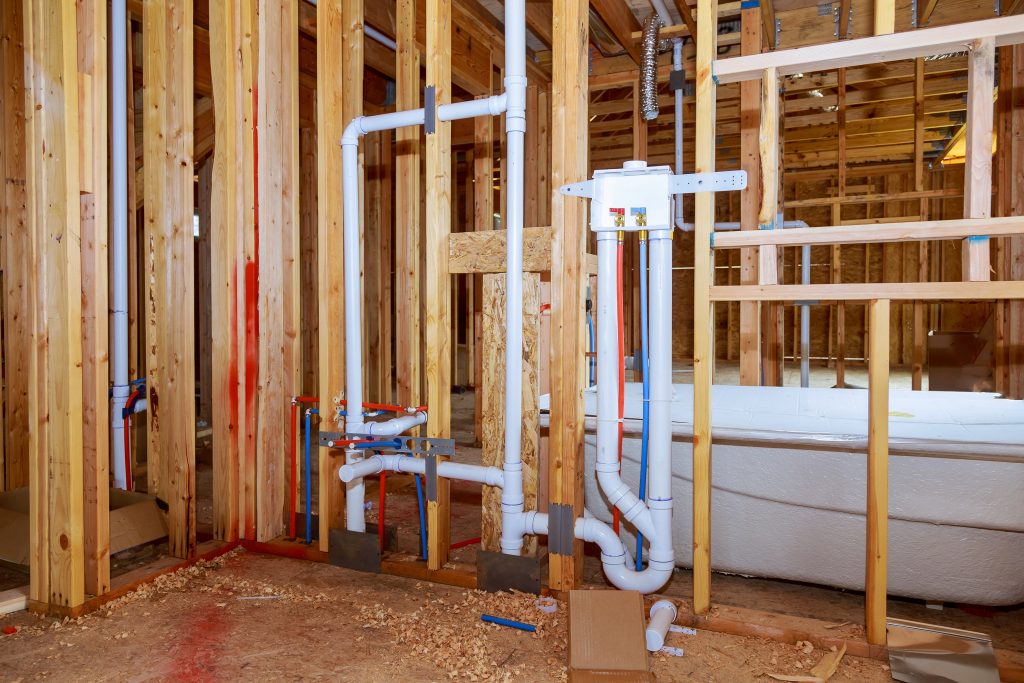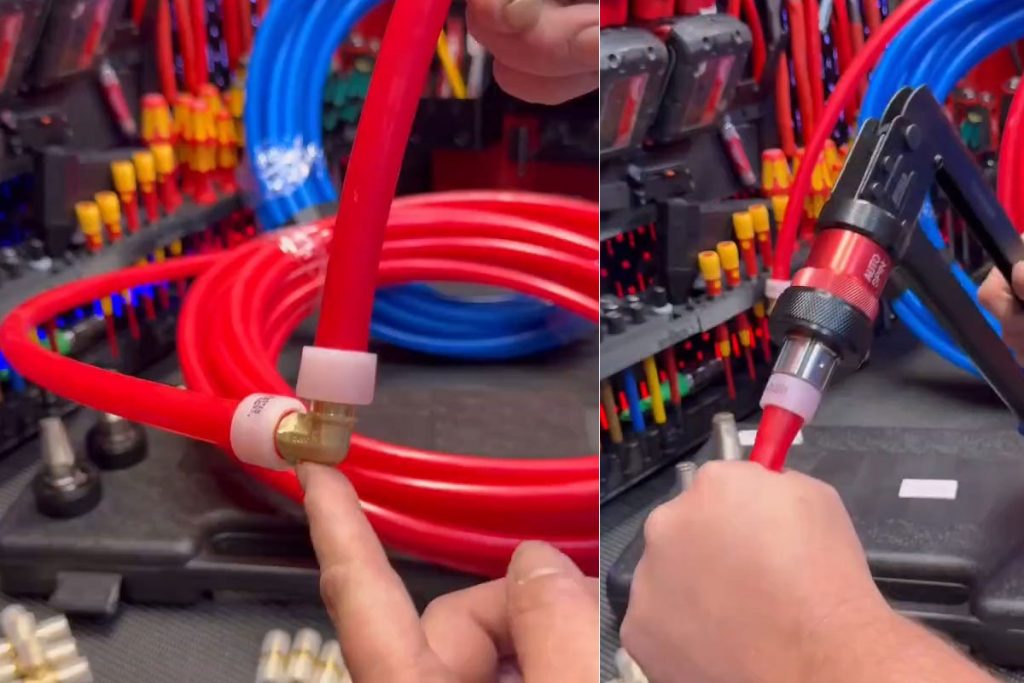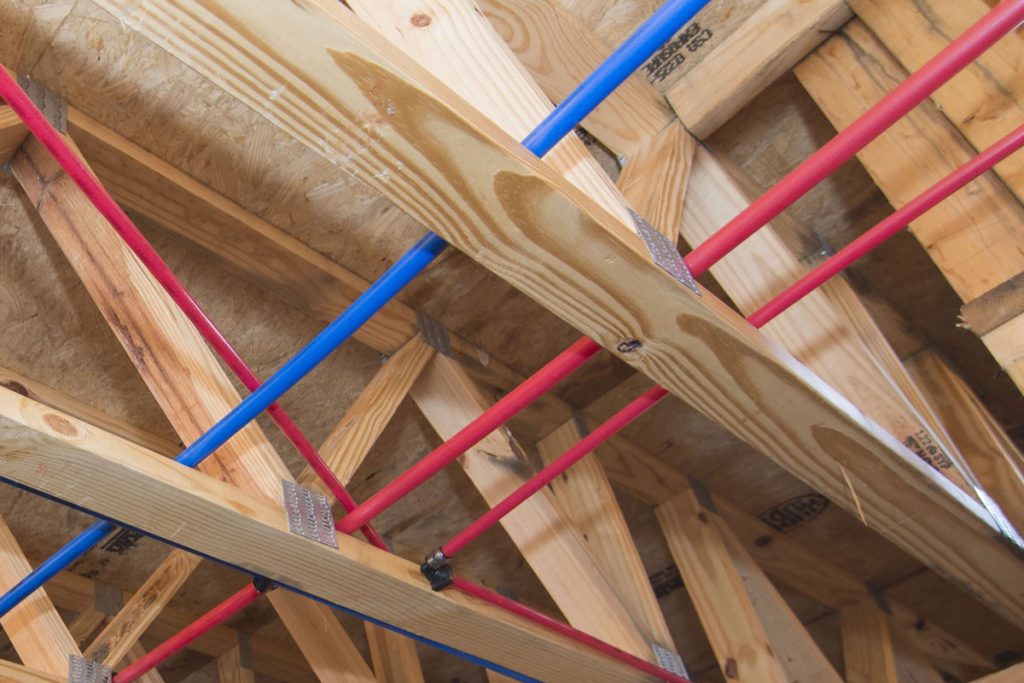Installing a washing machine outlet box is a task that can be done quickly, even by DIY lovers. It might sound like a lot of work, but with proper knowledge and instruction, you could quickly finish it by yourself. A well-designed plumbing system should include key components such as water supply lines, drainage pipes and an outlet box to keep everything organized. Proper plumbing is crucial for ensuring efficient and durable service of the washing machine, washing machine outlet box is one of the most essential components.
The washing machine outlet boxes are essential for managing water flow and providing accessible plumbing connections. By putting supply valves and a drain port within a single enclosure, these washing machine boxes help maintain a tidy and clean laundry area. PlumbingSell offers a wide range selection of different types of washing machine outlet boxes for you to choose from. In this guide, we’ll cover the essential introduction to outlet boxes and other types of outlet boxes available, how to install them and valuable tips for your projects.
Table of Contents
Understanding the Washing Machine Outlet Box
Washing machine outlet boxes are essential components that house the plumbing connections for a washing machine. They are used to provide a place for joining hot and cold water supply valves and drain connections to keep the plumbing system organized and accessible. By using washing machine boxes, they can help protect the surrounding walls from water damage when leaks occur and ensure safe and easy maintenance. Many washing machine outlet boxes include built-in shut-off valves for quick water control in case of emergencies or repairs. They often come in various sizes, types and different frame designs. However, the installation process for them is quite the same; these outlet boxes are mostly surface-mounted units installed inside the wall.
Types of Washing Machine Outlet Boxes
When selecting a washing machine outlet box, it’s essential to understand different connection types and features. We’ll cover the most common types to help you have a better understanding of choosing the outlet boxes for different plumbing applications.
MIP Washing Machine Outlet Box
MIP (male iron pipe) washing machine outlet boxes are designed for traditional threaded connections. They use MIP fittings, which are metal-threaded pipe connections that require additional support like Teflon tape to create a leak-proof seal. This type of washing machine outlet box is compatible with copper or brass. It is commonly used in installations where metal piping is preferred.
PEX Crimp Washing Machine Outlet Box
A PEX crimp washing machine outlet box is designed for PEX applications where PEX tubing and crimp rings are used to secure the connections. A PEX crimping tool is required to install this type of outlet box, as the crimp rings need to be installed around the PEX pipe and fittings. This type of washing machine outlet box creates a strong and durable connection. They are a popular choice in modern residential PEX plumbing systems because of their easy installation and cost-effectiveness.
PEX Expansion Washing Machine Outlet Box
PEX expansion washing machine outlet box is another type of outlet box designed specifically for PEX tubing systems. But unlike PEX crimp outlet boxes, they can only be used in PEX-A pipes, as PEX expansion methods are required for their installation. This has made a PEX expansion tool the must-have object for installing the outlet box. You need to use the tool to expand the PEX-A tubing to fit over the outlet box’s fittings, just like installing other fittings to PEX-A pipes. This type of outlet box is capable of creating a more flexible, tighter and leak-proof seal without requiring additional fittings like crimp rings or clamps. However, it could be a bit challenging for those who are new to PEX-A plumbing applications, as the expansion tool could be a bit difficult to use.
Washing Machine Outlet Box with Drain
A washing machine outlet box with a drain is designed to accommodate both hot and cold water supply lines together with a drainage system within a single unit. These boxes include both water supply valves and a built-in drain connection that allows easy attachment to the washing machine’s drain hose. This kind of washing machine box is better at reducing the leaks around the washing machine as they have all the connections within one container.
Choosing the Right Outlet Box
When choosing a washing machine outlet box, various factors need to be considered to find the right one for your plumbing system. The most important ones you need to consider are the plumbing setup of the projects, preferred connection methods, drainage requirements, installation methods, pipe sizes and materials. If you are using metal pipes, an MIP outlet box will be a better option, while for PEX piping systems, go with with PEX crimp washing machine outlet box of PEX expansion ones. If you are looking for better drainage management in the laundry room, check out the washing machine outlet box with drain for an all-in-one design.
Installation of a Washing Machine Outlet Box
When installing the washing machine outlet box, one of the most important factors to consider is the height of the box. We recommend the washing machine outlet box height for installation should be 42 inches above the floor, measured from the floor to the center of the outlet box. This height will ensure easy access to shut-off valves, provide accessibility for maintenance and reduce the risk of water damage near electrical components.
Follow the steps below as a basic guide to properly install or replace a washing machine outlet box in a basic laundry room setup.
Install washing machine outlet box
- Measure and cut an opening in the drywall between two wall studs for installing a new washing machine outlet box.
- Mount the washing machine outlet box frame securely using screws (if required)
Setup the drain hose (for washing machine outlet box with drain)
- Install the drain line; usually, a washer drain consists of a 2-inch PVC drainpipe with a standpipe of at least 30 inches long.
- Connect the washing machine drain hose to the outlet box’s drain port.
- Feed the drain hose into a nearby sink or a standpipe
- Ensure proper slope for the drain pipe to allow efficient drainage
Connect the water supply line
- Attach the hot and cold water supply lines from the washing machine to the designated inlets on the outlet box using PEX or metal pipes, depending on your plumbing system.
- Make sure you connect each hose to the appropriate connection.
- Apply Teflon tape or crimp rings if needed to prevent leaks.
- Tighten the connections securely with an adjustable wrench
Final Checks and Testing
- Turn on the water supply and run a check for leaks at all connections (valves, hoses, and drain pipes)
- Run a test cycle on the washing machine to ensure proper drainage
- Verify that the hose and valves are secure and do not leak or overflow
Conclusion
Properly installing a washing machine outlet box is essential for ensuring an efficient and durable plumbing system. While the process may seem complex, following the correct steps will make it easier, even for DIYers. By selecting the right type of outlet box, setting it at the proper height and securely connecting the water supply lines and drainage, you can prevent most of the leakages and improve the durability and efficiency of your washing machine’s plumbing system.
With the right tools and knowledge, you should be confident about how to install a washing machine outlet box. If you are looking for high-quality and budget-friendly washing machine outlet boxes, PlumbingSell offers a wide range of options to suit your various plumbing needs. Get in touch with us if you have any concerns.



